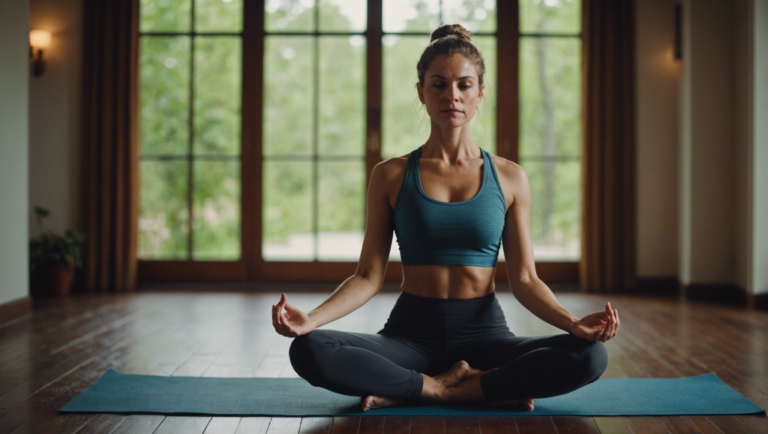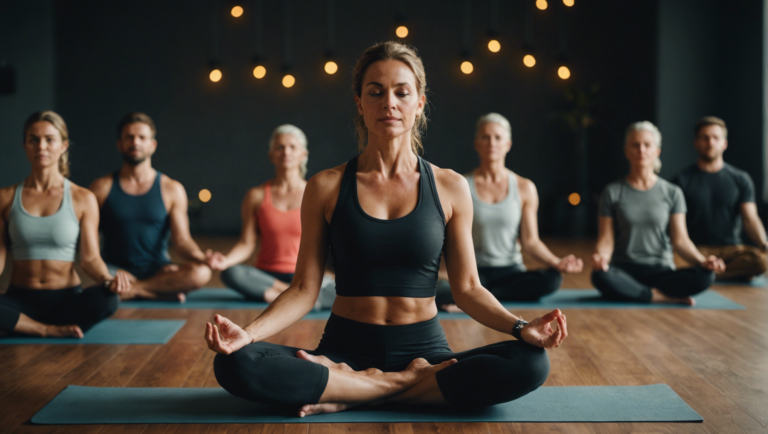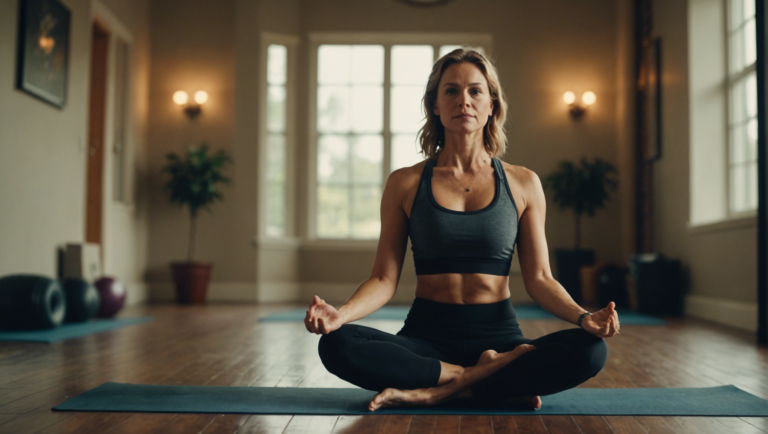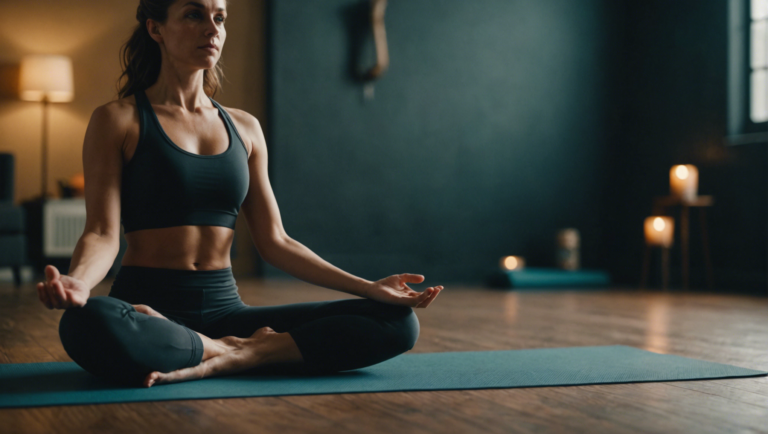Essential Guidelines: Mastering Yoga Quickly And Effectively
Understanding the Basics of Yoga Practice
Yoga is a holistic practice that encompasses physical, mental, and spiritual well-being. Understanding the basics of yoga practice is essential for anyone looking to embark on this transformative journey. Whether you are a beginner or have some experience with yoga, mastering the fundamentals will enable you to progress quickly and effectively in your practice.
The Foundation of Yoga Practice
Before diving into intricate yoga poses and sequences, it is crucial to grasp the foundational aspects of yoga. Breath awareness, also known as pranayama, forms the cornerstone of yoga practice. Learning to synchronize your breath with movement not only enhances the physical benefits of yoga but also calms the mind and promotes inner balance.
Cultivating Mindfulness and Presence
Yoga is more than just a series of physical postures; it is a moving meditation that encourages mindfulness and presence. Being fully engaged in each moment of your practice allows you to deepen your mind-body connection and experience the profound effects of yoga on a deeper level. By focusing on the present, you can release worries about the past or future, fostering a sense of inner peace.
Aligning Your Body and Mind
Alignment is key in yoga practice to prevent injury and maximize the benefits of each posture. Paying attention to proper alignment not only ensures safety but also helps you target specific muscle groups effectively. Understanding how each pose should feel in your body and making appropriate adjustments will enable you to progress in your practice while avoiding strain or discomfort.
Developing a Consistent Practice Routine
Consistency is key to mastering yoga quickly and effectively. Establishing a regular practice routine will not only help you build physical strength and flexibility but also cultivate mental discipline and emotional resilience. Start with manageable goals and gradually increase the duration and intensity of your practice as you progress. Remember that progress in yoga is a journey, and consistency is more important than intensity.
Listening to Your Body
One of the essential guidelines in mastering yoga is listening to your body. Honor your body’s limitations and avoid pushing yourself beyond your comfort zone. Yoga is a personal practice, and each individual’s body is unique. By tuning in to your body’s cues and respecting its boundaries, you can avoid injuries and create a sustainable practice that supports your overall well-being.
Seeking Guidance and Support
While self-practice is valuable, seeking guidance from experienced yoga instructors can greatly enhance your learning process. Attending regular classes or workshops allows you to receive personalized feedback, corrections, and insights that can catapult your progress. Experienced teachers can offer valuable guidance on alignment, breath work, and mindfulness techniques, empowering you to deepen your practice.
Embracing Patience and Persistence
Mastering yoga is a journey that requires patience and persistence. Rome wasn’t built in a day, and similarly, progress in yoga takes time. Celebrate small victories along the way and embrace setbacks as opportunities for growth and learning. By cultivating a mindset of patience and persistence, you can navigate challenges with grace and continue to evolve in your practice.
Mastering yoga quickly and effectively involves understanding the foundational principles of yoga, cultivating mindfulness, aligning your body and mind, developing a consistent practice routine, listening to your body, seeking guidance, and embracing patience and persistence. By integrating these essential guidelines into your yoga practice, you can embark on a rewarding journey of self-discovery and transformation.
Setting Realistic Goals for Your Yoga Journey
Importance of Goal Setting in Yoga
Yoga is not just a physical exercise but a holistic practice that encompasses the mind, body, and soul. Setting realistic goals is crucial in your yoga journey to help you stay focused, motivated, and ensure steady progress. When you have clear objectives in mind, you are more likely to stay committed to your practice and experience the full benefits of yoga.
Establishing S.M.A.R.T. Goals
To set effective goals for your yoga practice, it is essential to follow the S.M.A.R.T. criteria:
-
Specific: Clearly define what you want to achieve in your yoga practice. Whether it’s mastering a challenging pose, improving flexibility, or enhancing mental clarity, specificity is key.
-
Measurable: Your goals should be quantifiable so that you can track your progress. This could involve setting targets for the number of sessions per week, holding a pose for a certain duration, or measuring improvements in your overall well-being.
-
Achievable: While it’s great to aim high, ensure that your goals are realistic and attainable. Setting goals that are within reach will boost your confidence and motivation as you see yourself making consistent progress.
-
Relevant: Align your goals with your personal values and aspirations. Your yoga goals should resonate with what matters most to you and contribute to your overall growth and well-being.
-
Time-Bound: Set a timeline for achieving your goals. Having a deadline creates a sense of urgency and helps you stay motivated to work consistently towards your objectives.
Tailoring Goals to Your Practice
Every individual’s yoga journey is unique, so it’s essential to tailor your goals to suit your specific needs and aspirations. Whether you are a beginner looking to establish a regular practice or an experienced yogi aiming to deepen your poses, customizing your goals will make them more meaningful and rewarding.
Tracking Progress and Adjusting Goals
Regularly monitoring your progress is key to staying on course with your goals. Keep a yoga journal to record your practice, achievements, challenges, and reflections. Tracking your journey will not only show how far you’ve come but also highlight areas where you may need to adjust your goals or approach for better results.
Celebrating Milestones and Staying Motivated
As you work towards your yoga goals, remember to celebrate the milestones along the way. Acknowledge your achievements, whether big or small, and treat yourself with kindness and gratitude. By recognizing your progress, you will stay motivated and inspired to continue growing in your yoga practice.
Setting realistic goals for your yoga journey is a powerful way to deepen your practice, enhance your overall well-being, and experience transformation both on and off the mat. By following the principles of effective goal setting, staying adaptable to your evolving needs, and celebrating your successes, you can master yoga quickly and effectively while enjoying a fulfilling and enriching path of self-discovery.
Incorporating Breathing Techniques for Enhanced Practice
In the realm of yoga, mastering the practice quickly and effectively is a goal for many practitioners. One key element that can significantly enhance your yoga journey is the incorporation of breathing techniques. By harnessing the power of breath control, yogis can deepen their practice, improve concentration, and achieve a greater sense of well-being. Let’s delve into the essential guidelines for mastering yoga quickly and effectively through the integration of breathing techniques.
Importance of Breath in Yoga Practice:
Breath is the foundation of a yoga practice, with ancient yogic texts referring to it as "prana," or the vital life force. When we focus on the breath during yoga asanas, we not only oxygenate the body but also calm the mind and enter a state of flow. By syncing movement with breath, practitioners can cultivate mindfulness and enhance the mind-body connection.
Pranayama Techniques:
Pranayama, the yogic art of breath control, offers a myriad of techniques that can elevate your yoga practice. One popular pranayama exercise is "Ujjayi breath," also known as victorious breath, where the breath is intentionally audible, creating a soothing oceanic sound. This technique helps regulate breathing, increase oxygen flow, and foster a meditative state during asana practice.
Breath Awareness in Asanas:
As you move through different yoga poses, maintaining a focus on your breath is paramount. Deep, steady breathing can help release tension, improve posture, and enhance flexibility. For instance, in challenging poses like Warrior II or Triangle pose, steady inhalations and exhalations can assist in finding stability and ease within the pose. Remember that the breath should guide the movement, creating a seamless and harmonious practice.
Mindfulness Meditation and Breath:
Integrating mindfulness meditation with breathwork can further amplify the benefits of your yoga practice. By observing the breath without judgment and staying present in the moment, you can cultivate a sense of inner peace and heightened awareness. Techniques like "Anapanasati," or mindful breathing, allow practitioners to anchor their attention to the breath, quiet the mind, and awaken a sense of clarity and tranquility.
Breath for Relaxation and Stress Relief:
In today’s fast-paced world, stress and anxiety are prevalent concerns for many individuals. Yoga offers a sanctuary where breathwork can serve as a powerful tool for relaxation and stress relief. Practices such as "Nadi Shodhana" or alternate nostril breathing help balance the left and right hemispheres of the brain, promoting a state of equilibrium and calmness.
:
Breathing techniques into your yoga practice can yield profound benefits, both on and off the mat. By prioritizing breath awareness, mastering pranayama techniques, and cultivating mindfulness through breath and movement, you can elevate your practice to new heights. Remember, the breath is not just a physical action but a bridge to connect mind, body, and spirit in unity. Embrace the transformative power of breath in your yoga journey, and witness the magic unfold with each conscious inhale and exhale.
Exploring Different Yoga Styles and Their Benefits
Yoga is a versatile practice that offers a variety of styles, each with its unique benefits. Exploring different yoga styles can help you find the one that resonates best with your goals and preferences. From gentle and restorative practices to more vigorous and dynamic forms, there is a yoga style for everyone. Understanding the various yoga styles available can help you make an informed decision and enhance your overall well-being.
Understanding Traditional Yoga Styles for Holistic Wellness
Traditional yoga styles like Hatha yoga focus on the physical postures (asanas) and breathing techniques (pranayama) to achieve a balance between body and mind. This style is excellent for beginners as it provides a solid foundation for other yoga practices. Hatha yoga helps improve strength, flexibility, and overall vitality.
Vinyasa yoga, on the other hand, is a dynamic and flowing style that synchronizes movement with breath. It is often referred to as "flow" yoga, where each movement transitions seamlessly into the next. Vinyasa yoga helps build heat in the body, increases cardiovascular endurance, and promotes mindfulness through continuous movement.
Exploring Gentle and Restorative Yoga Styles for Relaxation
For those seeking a gentler practice, Yin yoga and Restorative yoga are excellent choices. Yin yoga involves holding passive poses for an extended period, targeting the connective tissues and promoting deep relaxation. This style helps release tension in the body and improves flexibility over time.
Restorative yoga focuses on relaxation and stress relief, using props like blankets and bolsters to support the body in comfortable poses. It is ideal for those recovering from injuries or experiencing high levels of stress. Restorative yoga helps activate the parasympathetic nervous system, promoting deep rest and healing.
Delving into Specialized Yoga Styles for Specific Needs
Beyond the traditional and gentle styles, there are specialized yoga practices tailored to specific needs. For instance, Bikram yoga, also known as hot yoga, is performed in a heated room to promote detoxification through sweat and increase flexibility. Kundalini yoga focuses on spiritual growth and inner awareness through dynamic movements, breathing techniques, and meditation.
Iyengar yoga emphasizes proper alignment and uses props to support the body in various poses. This style is beneficial for individuals looking to fine-tune their alignment and deepen their practice. By exploring these specialized yoga styles, you can address specific concerns or interests while enhancing your overall well-being.
Choosing the Right Yoga Style for You
When exploring different yoga styles, consider your goals, preferences, and physical condition. Experimenting with various styles and classes can help you discover what resonates with you on a personal level. Whether you seek relaxation, strength, flexibility, or spiritual growth, there is a yoga style that can support your journey towards holistic wellness.
Delving into the diverse world of yoga styles can enrich your practice and lead to transformative experiences both on and off the mat. By exploring traditional, gentle, and specialized yoga styles, you can tailor your practice to align with your unique needs and aspirations. Embrace the opportunity to explore different yoga styles and discover the profound benefits each has to offer.
Creating a Consistent Practice Schedule
To effectively master yoga quickly, one of the key factors to consider is creating and maintaining a consistent practice schedule. Establishing a routine that works for you can significantly improve your progress and overall experience with yoga. Here are essential guidelines to help you develop a consistent practice schedule:
Understanding Your Goals and Commitment Level for Yoga Practice
Before diving into creating a practice schedule, it’s crucial to understand your goals and commitment level. Ask yourself why you are practicing yoga and what you aim to achieve. Whether you’re seeking physical fitness, mental clarity, stress relief, or spiritual growth, aligning your practice schedule with your goals is essential. Evaluate how much time you can realistically dedicate to yoga each week to establish a sustainable routine.
Setting Realistic and Achievable Practice Goals
Setting realistic and achievable practice goals is key to staying motivated and consistent in your yoga journey. Start by defining how many times a week you want to practice and for how long each session will be. Be honest with yourself about what you can commit to without feeling overwhelmed. Gradually increase the duration or frequency of your practice as you progress to avoid burnout and injuries.
Establishing a Dedicated Practice Space
Create a dedicated space in your home or find a peaceful corner where you can practice yoga without distractions. Your practice space should be clean, clutter-free, and ideally away from noise and interruptions. Personalizing your space with inspiring decor, candles, or essential oils can help set the mood for your practice and make it a more enjoyable experience.
Following a Structured Routine or Class Schedule
Whether you prefer practicing yoga on your own or attending classes, having a structured routine or schedule can help you stay on track. Joining a local yoga studio or online classes can provide guidance, accountability, and a sense of community. Alternatively, create a personalized practice routine that includes a combination of asanas, pranayama, meditation, and relaxation techniques to cater to your specific needs and preferences.
Tracking Your Progress and Celebrating Achievements
Keep track of your practice sessions, progress, and achievements to stay motivated and inspired. Use a yoga journal or a digital app to record your daily practice, insights, challenges, and breakthroughs. Celebrate small milestones along the way, such as holding a challenging pose for longer, improving flexibility, or experiencing moments of inner peace and mindfulness. Reflecting on your journey can boost your confidence and commitment to continue practicing regularly.
Adapting to Changes and Listening to Your Body
Flexibility and adaptability are essential when it comes to maintaining a consistent yoga practice schedule. Life can be unpredictable, and there may be days when you feel fatigued, unmotivated, or unwell. Listen to your body and mind, and be open to adjusting your schedule when needed. It’s okay to take a break, modify your practice, or try different styles of yoga to keep things fresh and enjoyable.
Creating a consistent practice schedule is a fundamental aspect of mastering yoga quickly and effectively. By understanding your goals, setting achievable targets, establishing a dedicated practice space, following a structured routine, tracking your progress, and adapting to changes, you can cultivate a sustainable yoga practice that nurtures your mind, body, and soul. Stay committed, stay mindful, and embrace the transformative power of yoga in your daily life.
Conclusion
In mastering yoga quickly and effectively, it is crucial to understand the basics of yoga practice. By laying a strong foundation rooted in the fundamental principles of yoga, practitioners can progress with confidence and clarity. Setting realistic goals for your yoga journey is paramount in staying motivated and focused. Whether aiming to improve flexibility, achieve inner peace, or enhance physical strength, establishing tangible objectives will guide your practice towards success.
Breathing techniques into your yoga practice can significantly elevate your experience. Deep, intentional breathing not only enhances the mind-body connection but also promotes relaxation and reduces stress. By harnessing the power of breath, practitioners can deepen their poses and cultivate a sense of mindfulness throughout their practice.
Exploring different yoga styles and their benefits opens doors to a diverse range of practices tailored to individual preferences and goals. From the dynamic flow of Vinyasa to the precise alignment of Iyengar and the restorative nature of Yin yoga, each style offers unique advantages. By experimenting with various styles, yogis can broaden their practice, discover new dimensions of movement, and find what resonates best with their bodies and minds.
Creating a consistent practice schedule is key to mastering yoga efficiently. By dedicating regular time slots to practice, practitioners cultivate discipline and continuity in their journey. Consistency not only enhances physical progress but also deepens the mental and spiritual aspects of yoga. Whether committing to daily morning sessions or weekly studio classes, a consistent schedule lays the groundwork for steady improvement and growth.
As practitioners embrace these essential guidelines and integrate them into their yoga routine, they pave the way for accelerated progress and profound transformations. Understanding the core principles of yoga, setting achievable goals, honing breathing techniques, exploring diverse styles, and maintaining a consistent practice schedule collectively contribute to a holistic and fulfilling yoga journey.
Through dedication, patience, and a genuine passion for the practice, individuals can unlock the transformative power of yoga in their lives. By embodying the essence of yoga both on and off the mat, practitioners not only master the physical postures but also cultivate a deeper sense of self-awareness, inner peace, and overall well-being. Ultimately, mastering yoga quickly and effectively is not just about achieving challenging poses but about embarking on a transformative journey towards self-discovery, balance, and harmony.



